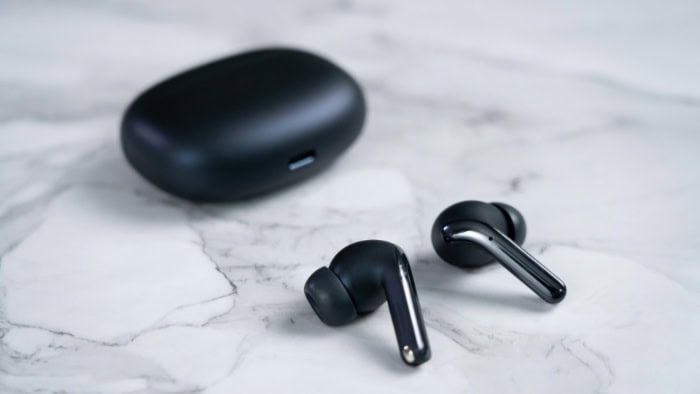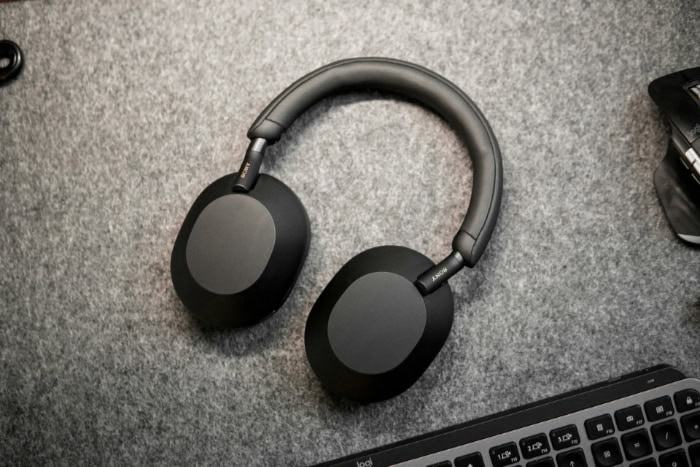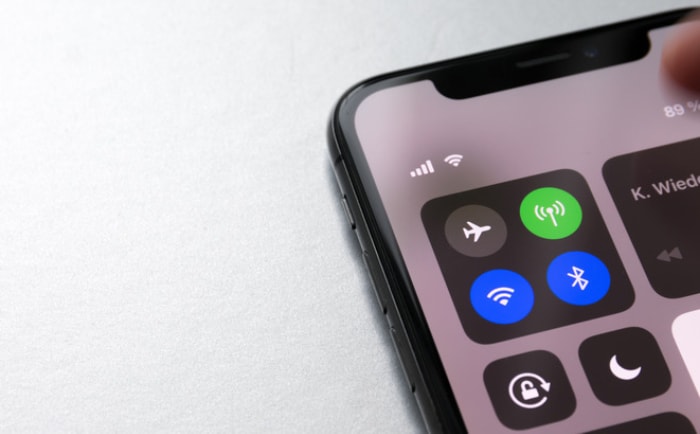Earbuds vs. Headphones: Sound, Fit, and Features Compared

Your choice of audio gear can redefine how you experience sound, from the thumping beat of your favorite playlist to the immersive quiet of a podcast or game. With earbuds and headphones dominating the market, each promises superior performance but caters to distinct preferences.
This decision is more than just a matter of style—it’s about finding the perfect balance between sound quality, comfort, and practicality that aligns with your lifestyle.
Whether you’re chasing uninterrupted focus, seamless portability, or an all-encompassing audio experience, earbuds and headphones bring unique benefits to the table. But which one truly delivers what you need?
Sound Quality and Performance
When it comes to audio devices, sound quality is often the first thing people consider. The design of earbuds and headphones plays a significant role in shaping the listening experience, with factors like driver technology and audio characteristics being crucial in determining how sound is delivered.
From the richness of bass to the clarity of vocals and instruments, each device has its strengths, making it essential to evaluate how they perform across different sound dimensions.
Driver Technology
Drivers are the heart of any audio device, responsible for converting electrical signals into the sound you hear. One of the most noticeable differences between earbuds and headphones lies in the size of their drivers.
Headphones typically feature larger drivers, often ranging from 30mm to 50mm. These larger drivers allow headphones to produce a wider range of frequencies with greater depth, especially in low-end tones like bass.
This makes them ideal for those who crave a powerful, immersive sound experience that replicates the feeling of being in a live concert.
Earbuds, on the other hand, use smaller drivers, usually between 6mm and 12mm, due to their compact size. While smaller drivers can still deliver commendable sound quality, they may struggle to achieve the same depth in lower frequencies as headphones.
However, advancements in technology have allowed many premium earbuds to compete impressively, offering balanced sound profiles despite their size limitations.
Another consideration is the soundstage, which refers to how spatially accurate and immersive the audio feels. Headphones, thanks to their over-ear or on-ear design, excel in creating a more expansive soundstage, making it easier to distinguish between different instruments or sounds.
Earbuds, although compact, often have a more intimate sound presentation, which some listeners may prefer for certain genres like vocals or acoustic music.
Audio Characteristics
The overall audio profile of a device is shaped by how it handles bass, mid, and high frequencies, as well as its ability to isolate sound. Bass response is one of the most commonly discussed aspects when comparing earbuds and headphones. Headphones, aided by their larger drivers and spacious ear cups, usually provide a deeper, richer bass.
This can make them more appealing to fans of bass-heavy music genres like hip-hop, EDM, or rock. Earbuds, while capable of delivering strong bass, may sometimes lack the same punch unless they feature advanced enhancements like dynamic drivers or tuned equalizers.
Mid and high-frequency performance is another critical factor. Headphones generally excel in these ranges, offering clearer vocals, crisp instruments, and a balanced sound signature.
However, many high-quality earbuds have made significant strides in this area, providing excellent clarity in mids and highs that can rival even some premium headphones. This makes earbuds a great option for those who enjoy lighter, detail-rich genres like jazz or classical music.
Sound isolation is where the design of the device plays a pivotal role. Earbuds, especially in-ear models with silicone tips, can create a tight seal that blocks out a significant amount of external noise passively.
Headphones, particularly over-ear models, also provide good isolation by covering the entire ear, but they may allow some sound leakage depending on their design. Active noise cancellation (ANC) technology is now widely available in both earbuds and headphones, further enhancing their ability to block out unwanted distractions and improve overall sound quality.
Comfort and Ergonomics

Comfort plays a critical role in choosing between earbuds and headphones, especially for those who wear audio devices for extended periods. Factors such as physical design, fit, and stability influence how a device feels during use and determine whether it enhances or detracts from your experience.
While earbuds are celebrated for their lightweight and compact nature, headphones often provide a broader sense of comfort due to their design.
Physical Design
The physical construction of earbuds and headphones impacts how they distribute weight and pressure. Headphones, particularly over-ear models, are designed with padded ear cups and headbands to reduce pressure on the head and ears.
When well-designed, this ensures even weight distribution, making them comfortable for long hours of use. However, poorly balanced headphones can exert unwanted pressure on the crown of the head or around the ears, leading to discomfort.
Their size can also make them feel bulky, which may deter users who value a lightweight experience.
Earbuds, on the other hand, are celebrated for their minimal weight and compact design. They sit directly in the ear canal or outer ear, avoiding any pressure on the head.
This makes them nearly unnoticeable during use, especially for shorter durations. However, the smaller design can sometimes amplify discomfort for individuals with sensitive ears, as prolonged use may lead to soreness if the fit isn’t ideal.
Another consideration is heat buildup, which can become an issue during extended usage. Over-ear headphones, due to their larger ear cups, may trap heat around the ears, especially in warm environments or during physical activity.
This can lead to sweating and discomfort. Earbuds, with their more open and breathable fit, generally avoid this issue altogether, keeping users cooler over time.
Fit and Stability
The fit of an audio device directly impacts its stability and overall comfort. Earbuds often come with silicone or foam tips in various sizes to provide a customizable fit.
In-ear models create a tight seal, ensuring that the earbuds stay securely in place even during active movements. This makes them particularly appealing for physical activities like running or workouts.
However, if the earbuds don’t fit properly, they may fall out or cause ear fatigue, which can be frustrating.
Headphones, despite their larger size, offer their own brand of stability. Over-ear and on-ear models rely on the headband and cushioned ear cups to stay in place.
Many premium models include adjustable or flexible headbands that can be tailored for a snug fit. While headphones aren’t as prone to shifting as earbuds, they might feel less secure during vigorous activities, making them less ideal for exercise.
Another aspect tied to fit is ear fatigue. Poorly designed earbuds can exert pressure on the ear canal, causing discomfort after prolonged wear.
Conversely, while headphones may avoid ear canal fatigue, the clamping force of their headband can lead to pressure around the ears or on the scalp if not designed with enough cushioning. Striking the right balance between fit and pressure is essential for ensuring long-term comfort in either device.
Practical Usage

The practicality of an audio device greatly influences how convenient it is to incorporate into daily life. Portability and battery life are two critical aspects to consider, as they determine whether a device is suitable for on-the-go use, extended listening sessions, or specific activities like commuting or traveling.
Both earbuds and headphones offer unique advantages, and understanding how they cater to different needs can make a significant difference in how they perform in real-world use.
Portability
Portability is often a deciding factor for those who use audio devices outside the home. Earbuds, with their compact design, are incredibly easy to carry and store.
Most models come with a small charging case that easily fits into a pocket, purse, or backpack, making them ideal for people who prioritize travel-friendly options. Their minimal size also allows for quick and effortless access, whether you're grabbing them to make a phone call or listen to music during a commute.
Earbuds are especially convenient for those who dislike bulky accessories or need an audio solution that can be set up in seconds.
Headphones, while portable in their own right, generally require more space due to their larger size. Many premium headphones are foldable or come with a carrying case, which helps reduce their storage footprint.
However, they still take up more room compared to earbuds and are less likely to comfortably fit into tight spaces. For frequent travelers, headphones can still be a good option, particularly when they’re used as part of a longer journey, like a flight, where their superior sound quality and noise-canceling capabilities often outweigh their larger form factor.
When it comes to quick use, headphones usually require a bit more effort to put on and adjust, especially over-ear models with adjustable headbands. While this might not be a significant drawback, it’s something to keep in mind if you need immediate access to your audio device on the go.
Earbuds, by contrast, are often ready to use within moments, thanks to their grab-and-go design.
Battery Life
Battery life is a crucial consideration for wireless audio devices, as it directly affects how long you can use them without interruptions. Wireless headphones frequently offer longer playback times on a single charge, with many high-quality models providing 20 to 40 hours of continuous use.
This makes them an excellent choice for users who enjoy extended listening sessions or forget to charge their devices regularly. Additionally, many headphones are equipped with fast-charging capabilities, allowing for several hours of playback after just a short recharge.
Earbuds typically have shorter playback times due to their smaller batteries, with most providing between 4 to 10 hours of use on a single charge. However, this limitation is offset by their charging cases, which serve as portable power banks.
A fully charged case can provide multiple recharges, extending the total listening time to anywhere from 20 to 30 hours or more, depending on the model. This makes earbuds suitable for people who are frequently on the move and can recharge their earbuds during short breaks.
Charging convenience is another factor to consider. Both earbuds and headphones rely on USB-C or wireless charging in modern models, offering fast and efficient solutions.
However, earbuds have an advantage when it comes to backup power, as their cases allow for recharging even when you don’t have access to an external power source. This added flexibility ensures that you’re less likely to run out of battery unexpectedly during the day.
Specific Use Cases

Different activities and environments call for audio devices that can perform well under specific conditions. Whether it’s a high-energy workout, a professional setting, or immersive gaming, both earbuds and headphones have distinct strengths tailored to particular needs.
Considering how these devices adapt to unique scenarios can help you choose the best option for your lifestyle and goals.
Exercise and Sports
For exercise and sports, audio devices need to be durable, secure, and comfortable during intense physical activity. Earbuds are often the preferred choice in this category due to their lightweight build and compact design.
Many models are designed with moisture resistance, making them ideal for sweaty workouts or outdoor runs. Features such as water resistance ratings (like IPX5 or higher) ensure that earbuds can withstand sweat and light rain without damage, which is crucial for athletic use.
Movement stability is another standout feature of earbuds in exercise settings. In-ear models typically come with interchangeable tips or ear hooks that create a snug, secure fit, preventing them from slipping even during high-impact activities like sprinting or jumping.
Their minimal size allows for easy movement without the risk of bulky equipment getting in the way. However, not all earbuds are equally stable, so users may need to experiment with different designs to find the best fit.
Ventilation is something athletes appreciate in their audio devices, especially for longer workouts. Earbuds excel here since they don’t cover the ears, allowing air to circulate freely.
This reduces heat buildup during high-intensity activities, keeping users cooler and more comfortable. Headphones, while offering superior sound quality and noise isolation, can be less practical for exercise.
Over-ear and on-ear designs can feel heavy or cumbersome, and they tend to trap heat, which may lead to discomfort during prolonged workouts.
Professional Applications
Audio devices are indispensable in professional environments, where sound quality, clarity, and reliability take precedence. For conference calls and communication, headphones often have the upper hand.
Models with over-ear designs and integrated microphones ensure crystal-clear sound for both the speaker and the listener. Noise-canceling technology, found in many high-quality headphones, is invaluable in blocking out ambient distractions, making them ideal for busy office environments or remote work settings.
Earbuds can also perform well for communication, particularly if they feature beamforming microphones, but their smaller size may limit microphone quality compared to headphones.
Studio monitoring demands a high degree of sound accuracy and neutrality. Professional-grade headphones are widely used in this context, as their larger drivers and over-ear design deliver unparalleled audio detail and clarity.
They allow producers, musicians, and sound engineers to detect subtle nuances in recordings, ensuring the final product meets industry standards. While earbuds are improving in audio fidelity, they are seldom the first choice for studio monitoring due to their smaller soundstage and less precise frequency response.
Gaming requirements present a unique set of challenges, as players often need immersive sound and clear communication with teammates. Over-ear headphones designed for gaming are an excellent choice, offering expansive soundstages that enhance spatial audio.
This makes it easier to pinpoint directional sounds like footsteps or gunfire in competitive games. Many gaming headsets also feature high-quality boom microphones for seamless communication.
While earbuds are compact and convenient, they may not provide the same level of immersion or microphone clarity that dedicated gaming headphones can deliver. However, they remain a viable option for casual gaming or portable setups.
Technical Features

Modern audio devices come packed with advanced features that enhance the overall listening experience. From noise control technologies that provide peace in chaotic environments to seamless wireless connectivity, earbuds and headphones have evolved to meet a wide range of demands.
Noise Control
Noise control is a crucial feature for anyone who values uninterrupted audio or needs to stay aware of their surroundings. Devices typically achieve this through passive isolation, active noise cancellation, or ambient sound modes.
Passive isolation relies on the physical design of a device to block out external sounds. Over-ear headphones excel in this area, as their ear cups completely cover the ears, creating a natural seal to minimize outside noise.
Earbuds, particularly in-ear models with silicone tips, are also effective at passive isolation. They snugly fit into the ear canal, reducing ambient distractions. However, the quality of passive isolation depends heavily on the fit and materials used.
Active noise cancellation (ANC) takes this a step further by using microphones and sound-processing technology to neutralize external sounds. Premium headphones are often equipped with superior ANC systems that effectively block low-frequency noises like the hum of an airplane or the chatter in a crowded café.
Earbuds with ANC are becoming increasingly popular, offering impressive performance despite their compact size. While earbuds may not deliver the same level of noise cancellation as high-end headphones, they are more than sufficient for most daily scenarios, including commutes and office use.
Ambient sound modes add another layer of customization by allowing outside sounds to enter while you listen to audio. This feature is invaluable for runners, cyclists, or anyone who needs to stay aware of their surroundings.
Many earbuds include this mode as a standard feature, given their use in active, outdoor environments. Some headphones also offer ambient modes, though the size and design of the ear cups can make the experience feel less natural compared to earbuds.
Connectivity
Seamless connectivity is essential for modern audio devices, as users often switch between devices or rely on wireless freedom during use. Wireless technology, multi-device pairing, and latency considerations are important factors to evaluate in both earbuds and headphones.
Wireless technology has become the standard for most earbuds and headphones. Bluetooth connectivity ensures a tangle-free experience and allows users to connect their devices without physical cords.
Both earbuds and headphones offer high-quality audio over wireless connections, but headphones tend to support more advanced codecs like LDAC or aptX for better audio fidelity. Earbuds, while catching up, often prioritize convenience and portability over high-definition audio standards.
Multi-device pairing is another feature that enhances usability, especially for those who frequently switch between devices like phones, laptops, and tablets.
Many modern headphones allow seamless connection to multiple devices at once, enabling you to answer a call on your phone while watching a video on your laptop without having to re-pair. While several premium earbuds now support this feature, not all models offer it, so users looking for this flexibility should double-check specifications.
Latency is a vital consideration for activities like gaming, video streaming, or virtual meetings. High latency can cause noticeable delays between audio and visual elements, which can be distracting.
Headphones, especially those designed for professional use, often include low-latency modes or use proprietary technology to reduce lag. Earbuds, while convenient, may sometimes face higher latency issues, although many newer models address this with low-latency settings or Bluetooth 5.0+ support.
For gaming or other latency-sensitive tasks, headphones typically offer a smoother experience.
Conclusion
Selecting between earbuds and headphones depends on personal preferences, daily habits, and specific needs. Earbuds shine with their portability, lightweight design, and convenience, making them ideal for exercise, commuting, and quick-use scenarios.
On the other hand, headphones offer superior sound quality, immersive noise control, and long-term comfort, making them better suited for professional applications, gaming, or extended listening sessions.
Both options have evolved to include advanced features like active noise cancellation, wireless connectivity, and customizable fit, ensuring there’s a solution for various lifestyles and situations.
Balancing comfort, sound performance, and practicality can guide you toward the device that feels most in sync with your routines and listening priorities.


